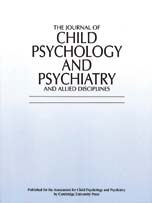Annotation: Repetitive Behaviour in Autism: A Review of Psychological Research
Published online by Cambridge University Press: 01 September 1999
Abstract
Repetitive behaviour is widely known to be one of three core and defining features of autism (ICD-10, World Health Organisation, 1990; DSM-IV, American Psychiatric Association, 1994). Any clinician who is told that a child repetitively flaps his arms, spends hours lining up Lego bricks, will not tolerate changes in routine, and has a peculiar fascination with the many varieties of electric fan available on the market will, before hearing anything about the social functioning or communicative abilities of that child, be deeply suspicious that the child is autistic. However, the literature on repetitive behaviour in autism reveals several paradoxes and inconsistencies. First, given the significant challenge that this class of behaviour can pose, the literature devoted to the study of this behaviour in autism is relatively small in comparison with the extensive literature on other aspects of autistic symptomatology. Whilst certain classes of repetitive behaviour have been described as nonspecific to autism (e.g. Prior & Macmillan, 1973), others have been suggested to be of particular significance to the disorder (e.g. U. Frith, 1989; Kanner, 1943; Wing & Gould, 1979). Finally, although repetitive behaviour is commonly defined as behaviour with no obvious goal or function (e.g. Hutt & Hutt, 1970), much of the literature concerning repetitive behaviour in autism has sought to explore what function this behaviour serves.
The aim of this Annotation is to provide a review of what is known about repetitive behaviour in autism, its specificity to the syndrome, and the functions or mechanisms that might underlie this behaviour at the psychological level.
Keywords
Information
- Type
- Annotation
- Information
- The Journal of Child Psychology and Psychiatry and Allied Disciplines , Volume 40 , Issue 6 , September 1999 , pp. 839 - 849
- Copyright
- © 1999 Association for Child Psychology and Psychiatry
- 510
- Cited by

